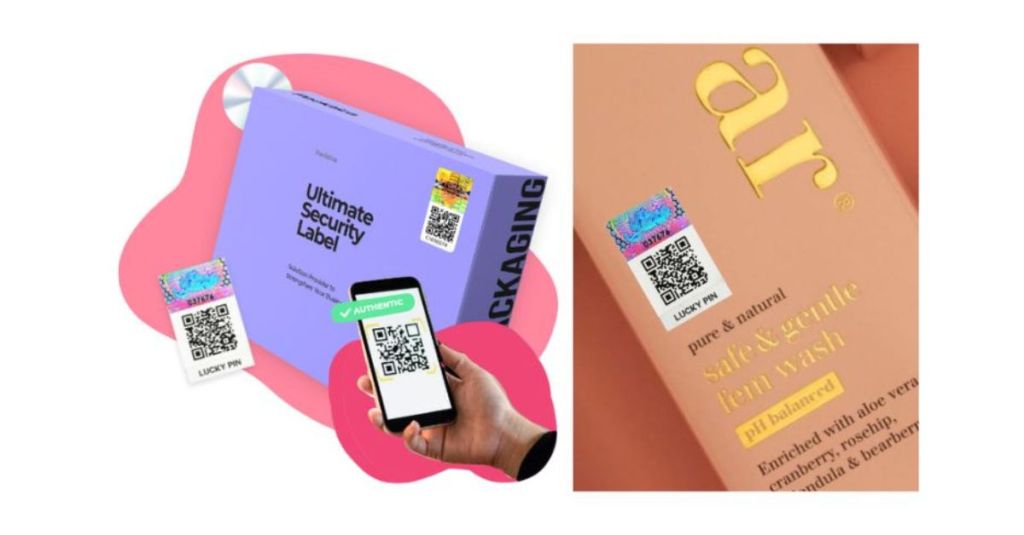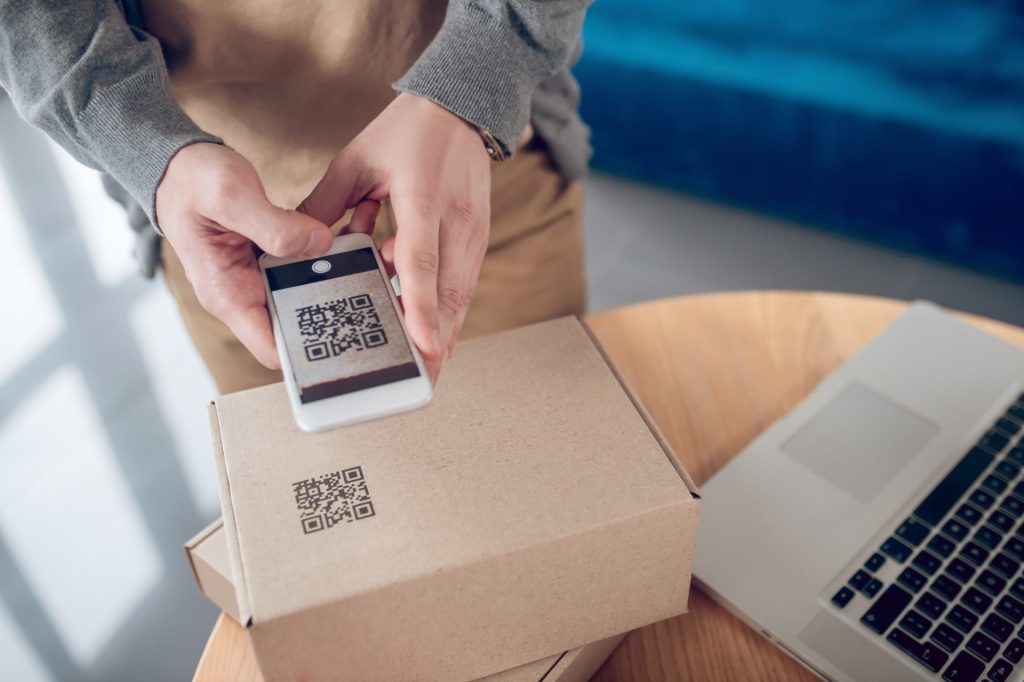-
Dilemma of Price Dumping and Packaging in Malaysia

In the vibrant landscape of Malaysia’s packaging industry, organizations face not solely the challenges of innovation and sustainability but also the looming problem of fee dumping. As corporations attempt to stay competitive, grasping the implications of fee dumping in the context of packaging is crucial.
Packaging in Malaysia: A Growing Industry
Malaysia’s packaging enterprise has witnessed a fantastic boom in recent years, fueled by growing client needs and the increasing e-commerce sector. The push for sustainable and eco-friendly packaging options has grown to be a force, prompting corporations to discover revolutionary substances and practices to meet evolving market expectations.
The Price Dumping Predicament: Threats to Fair Competition
However, amid this growth, the specter of fee dumping casts a shadow over the industry. Price dumping takes place when organizations promote their merchandise in an overseas market at fees that appreciably decrease than the manufacturing value or the expenses in their domestic market. This can lead to unfair competition, distorting market dynamics, and jeopardizing the viability of neighborhood businesses.
In the context of packaging in Malaysia, rate dumping poses a danger to the ecosystem of producers and suppliers. Foreign corporations enticing in fee dumping practices can flood the market with lower-priced alternatives, undercutting nearby organizations that may additionally want to compete on such aggressive pricing terms. This now not only influences the economic steadiness of neighborhood agencies but additionally hampers their capacity to make investments in sustainable and modern packaging solutions.
Navigating the Challenges: Embracing Innovation and Fair Practices
To navigate the challenges posed by rate dumping, Malaysian packaging groups should prioritize innovation and sustainable practices. By investing in lookup and development, companies can remain ahead of the curve, imparting special and environmentally mindful packaging options that resonate with the conscientious Malaysian consumer.
Additionally, collaboration and adherence to truthful alternate practices inside the enterprise are essential. Regulatory bodies and industry associations can play a pivotal position in growing a degree taking part in the field, making sure that organizations function ethically and inside the boundaries of honest competition.
Conclusion: Striking a Balance for a Sustainable Future
In the dynamic panorama of packaging Malaysia, the industry’s increase and sustainability hinge on putting a subtle balance. While embracing innovation and assembly the needs of an altering market are imperative, nearby organizations ought to additionally stay vigilant towards the pitfalls of rate dumping. By fostering a local weather of truthful opposition and prioritizing sustainable practices, the Malaysian packaging enterprise can chart a path toward an affluent and environmentally mindful future.
-
Integration of QR Code Systems and Packaging Printing

Streamlining Operations with QR Code Systems
In the cutting-edge digital age, agencies are continuously in search of progressive options to optimize their operations. One such science that has revolutionized a variety of industries is the QR code system. QR codes, or Quick Response codes, have ended up worthwhile equipment in bettering efficiency, traceability, and purchaser engagement.
When built in into packaging printing processes, QR code structures provide a seamless way to encode quintessential information. From product important points to manufacturing dates, QR codes grant a digital hyperlink between bodily merchandise and the digital realm. This connectivity allows agencies to tune inventory, display shipments, and enhance typical provide chain management. With a rapid scan, shoppers can get admission to product information, enabling knowledgeable buying choices and fostering manufacturer trust.
Transforming Packaging Printing
Packaging printing performs a pivotal position in branding and purchaser interaction. In this digital era, usual packaging has evolved, incorporating QR codes to supply greater consumer experiences. By integrating QR code structures into packaging designs, corporations can interact with clients in interactive advertising campaigns, offering entry to specific content, discounts, and product-related videos. This interactive method no longer solely captivates buyers but additionally strengthens company loyalty.
Moreover, QR codes facilitate anti-counterfeiting efforts. By incorporating special QR codes on products, producers can put in force impenetrable authentication processes. Consumers can confirm product authenticity via an easy scan, making sure they acquire authentic items whilst safeguarding the company’s reputation.
The Future of Connectivity
The synergy between QR code structures and packaging printing is paving the way for a related future. As technological know-how continues to advance, QR codes are turning into extra sophisticated, enabling dynamic content material shipping and personalized experiences. Businesses can leverage QR codes to acquire treasured patron insights, analyze buying patterns, and tailor advertising and marketing techniques accordingly.
In conclusion, the integration of QR code structures and packaging printing is reshaping the way agencies function and engage with consumers. This effective aggregate enhances efficiency, strengthens brand-consumer relationships, and fosters innovation. Embracing this technological know-how now not only propels companies beforehand of the opposition but also creates a seamless bridge between the bodily and digital realms. As we pass forward, the collaborative viability of QR code structures and packaging printing holds the key to an extra connected, informed, and attractive future for organizations and shoppers alike.
-
QR Codes vs. Traditional Barcodes: Advantages and Limitations

In the recent technological landscape, effective data acquisition and information management are now essential. Technology plays significant role to improve user experiences, expedite operations, and guarantee the authenticity of items. The quick development of digital technologies and data analytics has changed how businesses function and engage with their clients. You can use QR code printing process to make a quick decision.
QR codes have emerged as one of the most effective tools in the field of data encoding and knowledge transmission. Being a top choice for both individuals and businesses, their appeal is a sign of their versatility and efficacy. In the intricate world of managing information, QR codes and standard barcodes coexist, each with unique benefits and limitations.
Understanding QR Codes and Traditional Barcodes
QR codes and conventional barcodes serve crucial roles in the field of data encoding. Despite having similar functions, they each have unique qualities.
QR Codes: A Modern Data Carrier
QR codes are two-dimensional barcodes that contain information in the form of a matrix pattern of black squares on a white backdrop. The capacity to contain a lot of data, including text, URLs, contact information, and even multimedia, made QR codes, very popular. They are made to scan rapidly, making them perfect for uses other than regular barcodes.
Traditional Barcodes: The Pioneers of Data Identification
Contrarily, conventional barcodes are one-dimensional and made up of a variety of differently sized lines and gaps. They were originally used in the 1970s and transformed sectors like transportation and retail by offering a uniform framework for product identification. Although conventional barcodes are excellent at encoding numeric or alphanumeric data, their capacity is constrained in comparison to QR codes.
Unlocking the Benefits: Advantages of QR Codes
One of the primary benefits of QR codes is their increased data capacity. In contrast to the restricted storage space of conventional barcodes, a normal QR code may hold up to 7,000 alphanumeric characters. This makes QR codes essential for uses needing a large amount of data storage, such product labelling, inventory control, and contactless payment methods. Incredibly flexible, QR codes may encode a wide range of data, including URLs, contact details, Wi-Fi login credentials, and even vCard data. Their usefulness in marketing, authentication, and interactive activities like augmented reality apps is increased by their adaptability.
For quick scanning, QR codes were created. Information retrieval is now nearly immediate due to smartphones with high-resolution cameras and QR code scanning software. By improving user ease, this functionality makes QR codes acceptable for use in ticketing, access control, and product authentication. Even if the code is partially broken or hidden, error correcting techniques included into QR codes allow for reliable data retrieval.Unveiling the Benefits: Advantages of Traditional Barcodes
Traditional barcodes are inexpensive to produce and print, making them an excellent choice for labelling. They can be easily created on a variety of materials, including paper, cardboard, and plastic, and they require less sophisticated printing equipment. The universal compatibility of traditional barcodes with the current scanning infrastructure is ensured by their adherence to standardized formats like UPC and EAN.
Traditional barcodes are straightforward and efficient from a financial standpoint. When compared to the specialized gear and software needed for QR code systems, barcode printing and scanning equipment is more widely accessible and often more inexpensive. In comparison to QR codes, which may be harmed if printed on inferior materials or subjected to extreme weather conditions, traditional barcodes are less prone to wear and tear.
Uncovering the Boundaries: Exploring Limitations of QR Codes
To retrieve data from QR codes, users must use smartphones or other specialized scanning equipment. Even while smartphones are widely used, certain people might not have access to or feel comfortable using a device that can scan QR codes, which limits the technology’s use. As scanning a QR code may result in unwanted data gathering or access to nefarious websites, it might possibly cause privacy problems. To reduce security threats, users must use caution while scanning QR codes from unidentified sources.
Despite its adaptability, QR codes might not be the most suitable option in all situations. For straightforward product identification or tracking tasks when considerable data storage is unneeded, traditional barcodes continue to be more useful. Customised QR codes may become harder to read if design features interfere with the code’s pattern, notwithstanding its aesthetic appeal.
Barcode Evolution: Navigating the Shortcomings of Traditional Methods
Traditional barcodes have a lot of limitations, but their data capacity is the biggest one. They are poorly able to handle complicated information like multimedia or in-depth product descriptions and are best suited for encoding numeric or alphabetic data. QR codes can be scanned faster than traditional barcodes, which may take a little longer. This discrepancy in scanning speed might hamper operations in high-throughput settings. The strong error correcting features of QR codes are absent from conventional barcodes.
QR Code Systems and Printing: Looking to Get The Best Provider
We recognize the expanding significance of QR codes in contemporary enterprises as a top provider of barcode and label solutions. We provide cutting-edge QR code solutions and printing services to fulfil their clients’ changing demands. Our QR code system is made to handle a wide range of tasks, including marketing campaigns, inventory management, and product labelling. We manufacture QR codes on a variety of substrates, such as labels, packaging materials, and promotional goods, using cutting-edge printing technology. Our printing procedure follows industry best practices, ensuring that QR codes will remain functional and readable even under adverse conditions.
Conclusion
QR codes are useful for applications ranging from marketing to verification because of their superior data capacity, adaptability, and personalization. However, they might not be the best option in every circumstance, and conventional barcodes continue to be a dependable and affordable option for basic data identification. The decision between QR codes and conventional barcodes ultimately comes down to the particular requirements of organizations and customers in the constantly changing world of technology and data management. It’s crucial to remain up to date on both technologies’ capabilities and constraints in order to make wise adoption decisions as they both continue to develop. Our commitment to delivering high-quality qr code printing ensures that businesses have access to cutting-edge technology that meets their requirements.
-
Streamlining Your Digital Presence with Variable Data Printing

In the present computerized period, the multiplication of cell phones, social media, and high-level computing platforms has changed how organizations and customers interact. Despite these advancements, print media remains an effective method for correspondence, particularly when joined with the abilities of computerized innovation. Enter Variable Information Printing (VDP), a development that coordinates computerized data with print media, gives a customized, designated, and productive scaffold among the web and offline realms. This post investigates how Variable Information Printing can smooth out your digital presence, ensuring that both your online and offline marketing efforts are seamlessly interwoven.

What is Variable Data Printing?
Variable Data Printing, otherwise called personalized printing or database-driven printing, utilizes progressed computerized printing innovation to change the result of a printed report on a piece-by-piece basis. This implies that each printed piece can be modified or custom-made for a particular beneficiary, based on information from a database or external file.
Imagine sending out 10,000 brochures to possible clients, and every single one of those handouts tends to the beneficiary by their most memorable name and features items they’ve recently shown interest in on the web. That is VDP in real life.
Benefits of Streamlining Digital Presence with VDP
Enhanced Personalization: With the capacity to combine digital data with print, organizations can accomplish a more elevated level of personalization in their missions. This resounds with shoppers, as customized content feels more pertinent, prompting better commitment and further developed transformation rates.
Integration of Online and Offline Marketing: By connecting client’ online ways of behaving with their offline touchpoints, VDP can overcome any barrier between the digital and physical worlds. For example, a client perusing an internet-based store abandons their cart. VDP can set off a customized mailer with unique proposals on those precise items, poking them toward a buy.
Improved ROI on Marketing Campaigns: By focusing on clients with accuracy, organizations can accomplish a better yield on speculation (return for money invested) from their promoting efforts. The mix of computerized bits of knowledge and customized print expands the possibilities changing over a likely lead into a deal.
Increased Brand Loyalty: When buyers feel they are getting unique consideration from a brand, loyalty is likely to increase. VDP guarantees that clients see custom-fitted substances, causing them to feel esteemed and comprehended.
Key Steps to Streamlining Your Digital Presence with VDP
Data Collection & Analysis: The foundation of VDP is powerful information. Brands need to gather pertinent information from their digital touchpoints, be it social media engagement, website analytics, or e-commerce behaviors. The quality and profundity of this information decide the adequacy of the customized content.
Integration with CRM: Customer Relationship Management (CRM) tools play a pivotal role. By coordinating VDP with CRM, organizations can automate the most common way of conveying customized content in light of explicit triggers or client ways of behaving.
Design for Flexibility: When creating designs for VDP campaigns, it’s fundamental to make adaptable layouts that can oblige fluctuating measures of information. A very planned layout guarantees that the last printed piece looks durable and proficient, independent of the customized content.
Test and Optimize: Similarly as with all promoting initiatives, testing is critical. Run pilot campaigns to test the viability of your VDP drives. Assemble input, measure return for money invested, and continually streamline for improved results.
Privacy Considerations: While personalization is essential, so is respecting user privacy. Ensure that all data used for VDP is obtained ethically and with user consent. Transparent communication about how the data will be used can help build trust.

The Future of VDP and Digital Integration
The continued evolution of technology will further integrate the online and offline worlds. Augmented Reality (AR) could be combined with VDP, enabling users to scan a printed piece with their smartphones to engage in an immersive digital experience. Additionally, as Artificial Intelligence (AI) becomes more sophisticated, the predictions and personalizations made possible by VDP will become even more precise.
Conclusion
In the vast landscape of digital marketing, print media, when combined with innovations like Variable Data Printing, can still make a significant impact. By integrating digital insights with the tactile and tangible nature of print, businesses can create memorable, personalized experiences for their consumers. In the ever-evolving world of marketing, the blend of old and new—of digital insights and printed communication—provides a pathway for businesses to truly stand out and resonate deeply with their audience.
If you are looking for the best void sticker supplier then contact :- Packtica.
-
What’s a different between void sticker and Hologram sticker
Void sticker and hologram sticker are two particular kinds of security labels utilized for different purposes, with each offering remarkable highlights and advantages. We should dive into the critical contrasts between void sticker and hologram sticker, investigating their attributes and applications.
Void Sticker:
Void sticker, frequently alluded to as tamper-obvious or tamper-safe stickers, are intended to abandon a reasonable message in the event that somebody endeavors to eliminate or tamper with them. These stickers are commonly built with a unique glue that bonds firmly to the surface it is applied to, making it hard to neatly eliminate.Tamper-Proof:
Void stickers are essentially utilized for security purposes. At the point when somebody attempts to strip off a void sticker, it falls to pieces, leaving “VOID” or a comparable message on both the sticker and the surface underneath it. This fills in as an obvious sign of tampering.
Applications:
Void sticker find applications in different ventures, including report security, warranty seals, and product packaging. They are utilized to shield delicate information and discourage unapproved access or tampering.
Customization:
These stickers can be altered with one of a kind plans, text, or chronic numbers for upgraded security. Customization choices assist with guaranteeing that they are trying to imitate.
Hologram Sticker:
Hologram sticker, then again, are known for their particular three-layered appearance. They are made utilizing holographic innovation and frequently highlight unpredictable examples and special visualizations that are hard to precisely repeat.Visual Allure:
Hologram sticker are outwardly charming, making them well known for marking and product confirmation. They are perceived for their brilliant, consistently changing appearance when seen from changed points.
Verification:
Hologram sticker are ordinarily used to check the credibility of products. The complex holographic plans are trying to duplicate, giving an elevated degree of security against falsifying.
Against Forging:
These stickers are utilized by different enterprises, including drugs, gadgets, and extravagance products, to battle falsifying and safeguard their image respectability.
Customization:
Hologram stickers can be altered with organization logos, explicit plans, and serialized information, adding an additional layer of security. Novel holographic impacts can likewise be customized to match marking necessities.
In rundown, the critical contrast between void sticker and hologram stickers lies in their essential capabilities and appearance. Void sticker are tamper-obvious, leaving an unmistakable message while tampering is endeavored, while hologram sticker offer both visual allure and hostile to duplicating properties. The two kinds of stickers can be modified to suit explicit security and marking needs.
Remember, while utilizing security stickers like void and hologram sticker, it’s fundamental to pick the right one for your particular application to guarantee the most significant level of assurance against tampering and falsifying.
-
QR Codes and Smart Packaging: Redefining How We Interact with Products

In the present quickly advancing consumer landscape, QR codes and smart packaging have arisen as progressive tools that are rethinking the way in which we connect with products. Joining innovation and comfort, QR code packaging is reshaping the manner in which we draw in with items, from beginning purchase to post-purchase interactions.
Enabling Personalized Experiences
Smart packaging, engaged by QR codes, bridges the physical and advanced realms, making immersive and personalized experiences. Through a simple scan, consumers open a universe of information, from item details and usage instructions to special offers and reviews. This immediate commitment establishes a more profound association among brands and consumers, fostering dedication and trust.
Ensuring Authenticity and Security
Integrating QR codes into packaging design goes past improving consumer association; it also addresses concerns about item authenticity and security. Brands can use QR codes to carry out security tape for packaging, permitting customers to confirm the honesty of the item and ensuring they get authentic items. This additional layer of security safeguards consumers as well as fortifies brand notoriety.
Advancing Sustainability and Responsibility
Furthermore, the seamless integration of smart packaging with QR codes paves the way for eco-accommodating initiatives. Consumers can access reusing information, disposal guidelines, and sustainability initiatives, advancing responsible consumption.
Conclusion:
the marriage of QR codes and smart packaging is altering how products are experienced. It’s not just about scanning a code; it’s tied in with opening a personalized excursion and establishing another dimension of trust among brands and consumers. As the world embraces these advancements, QR code packaging is shaping a future where each item tells a convincing computerized story.
-
Why Choose Security Tape for Packaging?

Are you a retailer who indulges in large-scale trades where items need to be packed and sent away regularly? Or are you a consumer who often receives packaged goods? Either way, you must be familiar with the concept of Security Tape for Packaging. It is the sticky material people use to wrap cardboard boxes with to keep them closed.
A security tape is one of the many things that people use but doesn’t acknowledge. Despite being a significant addition, one often overlooks its presence and takes the tape for granted. However, if you think deeply, you’ll understand that without security tape, transporting packages to faraway places will be almost impossible. They bring to people very simple but very effective benefits.
5 Ways how a Security Tape can protect your luggage
Security Tape for Packaging helps you secure stuff in a box. That is, they protect the objects from damages and theft. So, you can see exactly how important such a tape can be when it comes to distant shopping and retail.
- Strength –
Security tapes are often wide in size and quite strong. As a result, when used for packaging purposes, they add high protection to the items. Furthermore, they keep the boxes and cartons tightly packed, preventing the inside stuff to move too much. This way, they keep the products from harming themselves in the journey.
When doing distant trades, there’s a risk that your product might get damaged along the way. Though, if you are a consumer, you can easily replace the damaged good. However, as a retailer, you’ll have to face loss if anything as such happens. Thus, it becomes your responsibility to see to the safety of the products. With Security Tape for Packaging, the task might get easier.
- Higher Assurance –
The stronger the tape is, the higher the assurance you get from it. A strong, adhesive tape will stay locked even in adverse circumstances. To run a successful trade, these are exactly what you need. A strong Void Sticker promises to remain unharmed under pressure.
- Cost-Effective –
Other alternative ways to lock a box might be hot gluing its edges or stapling the sides. However, the cost of collecting so much glue and so many stapler pins can be very high. Instead, if you go for Security Tape for Packaging, you’ll surely save some bucks. Not only is it budget-friendly, but one roll of security tape can cover a number of cartons. So, in the end, you are saving money as well as resources.
- Can be Tamper Proof –
As you have already read, security tapes can be very strong. They can firmly hold their grounds even under force and pressure. Of course, they’ll have some breaking mechanisms, for they need to be opened sooner or later. The product isn’t going to stay caged up in the cardboard forever.
Nonetheless, a good Security Tape for Packaging can serve as a tamper-proof barrier for people who don’t know the system. This means a quality Void Sticker can be strong enough to prevent intrusion and theft against the package.
- Stronger Adhesives –
Security tapes are layered with thick and strong adhesives at the bottom side. This helps them to stay on the cardboard no matter what. Even if you shower the carton with water, the cardboard might get damaged but the sticker would stay strong. Such tapes are difficult to come off and thus, they are one of the best ways to secure your packages.
Conclusion –
Online businesses have become a huge part of today’s society. They are the easiest way to buy and sell products without much bargaining or overthinking. As a result, transportation of packaged products is rapidly increasing. Moreover, overseas trades also demand secure deliveries. Consequently, a wider part of the world is opening to the business. In such times, being one of the best retailers can serve you well. Let security tapes be the better and more profitable alternative for you.
-
Subscribe
Subscribed
Already have a WordPress.com account? Log in now.